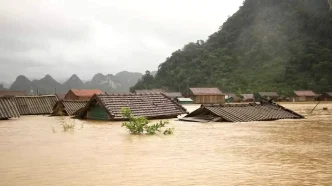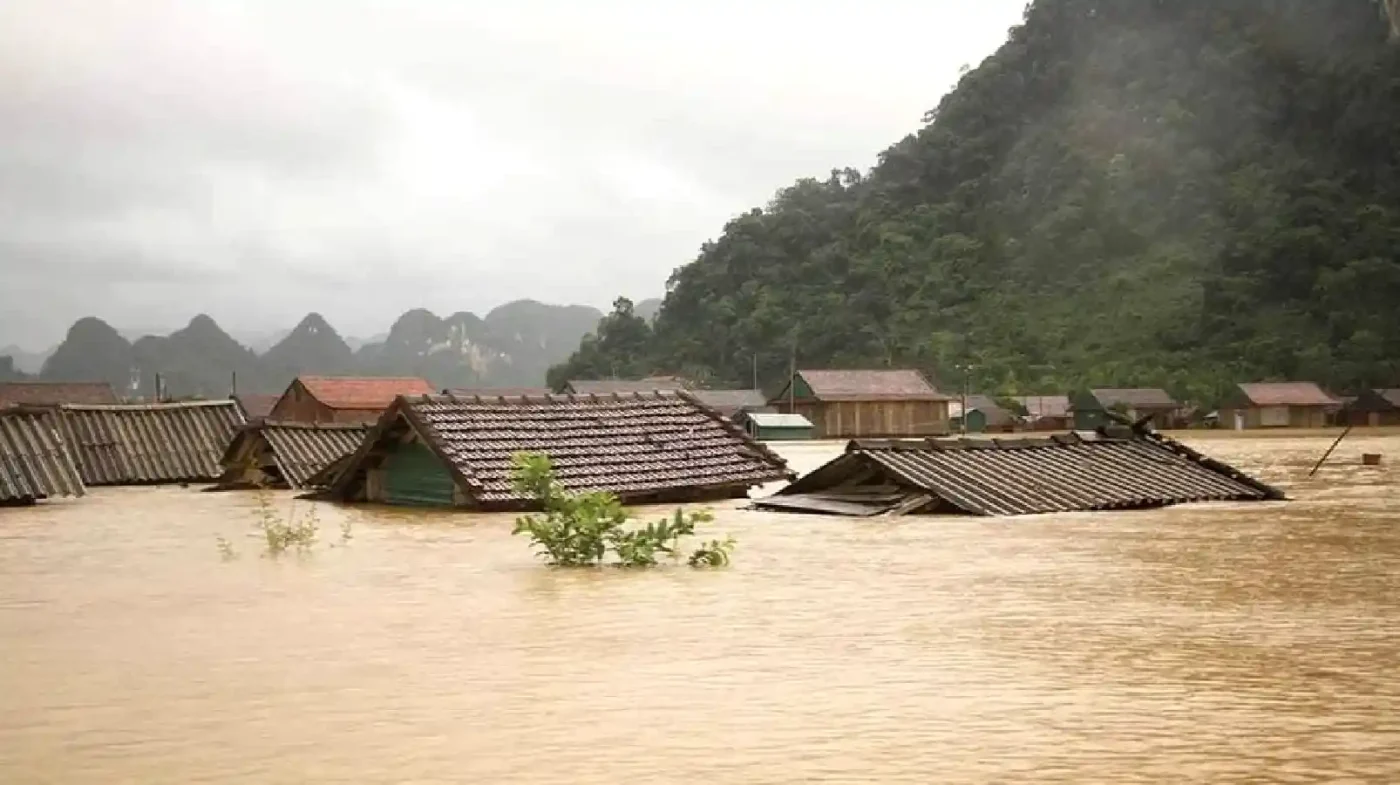Heavy rainfall and landslides have wreaked havoc across northern Vietnam, claiming at least nine lives and injuring seven others over several days of unrelenting weather. The disaster, centered in provinces such as Lai Châu, Bắc Kạn, and Tuyên Quang, has caused widespread damage to homes, infrastructure, crops, and livestock, with losses running into billions of Vietnamese Dong. As authorities scramble to assess the full extent of the destruction and brace for more rain, questions loom over the region’s preparedness for increasingly severe weather events.
Human and Material Toll Mounts
According to initial reports from the Department of Dyke Management and Disaster Prevention under the Ministry of Agriculture and Environment, Lai Châu Province recorded the highest casualties, with five deaths and four injuries. Bắc Kạn Province reported four deaths and three injuries, while other areas like Tuyên Quang, Hà Giang, and Cao Bằng bore the brunt of property and agricultural losses. In Tuyên Quang’s Na Hang District, floods and landslides damaged 23 homes and inundated parts of Na Hang Town. A livestock farm in the area was buried under debris, killing hundreds of chickens, ducks, and pigs, while roads in Sơn Phú Commune were either washed away or blocked, isolating communities.
The financial impact in Tuyên Quang alone is estimated at over VNĐ1 billion (US$38,550), a significant blow to a region heavily reliant on agriculture. Across the affected provinces, more than 190 hectares of crops and 26.3 hectares of rice were destroyed, with Cao Bằng, Bắc Kạn, and Hà Giang suffering the most severe losses. Additionally, around 700 livestock and poultry perished, with over 600 of those deaths reported in Tuyên Quang. Infrastructure damage extended to bridges, power poles, and schools in Bắc Kạn, Hà Giang, and Cao Bằng, further complicating recovery efforts.
Beyond the northern provinces, other regions of Vietnam have not been spared. In Điện Biên’s Mường Chà District, a recent earthquake caused cracks in homes, schools, a medical station, and local government offices, with damages pegged at approximately VNĐ1.85 billion (US$71,300). In the Mekong Delta, water erosion in An Giang’s Long Điền B Commune led to the collapse of a section of the Ông Chưởng Canal, damaging ten homes and causing losses of about VNĐ2 billion (US$77,200). Meanwhile, heavy rain and tidal surges triggered a landslide along the 30/4 Canal in Bạc Liêu City, underscoring the nationwide scope of the crisis.
Looming Threats and Urgent Responses
The National Centre for Hydro-Meteorological Forecasting has issued stark warnings of further heavy rainfall across the northern region, including Tuyên Quang, from May 22 to 25. Rainfall totals are expected to range between 100 and 250mm, with some areas potentially exceeding 350mm. Such intense downpours, particularly those delivering over 100mm in just three hours, could trigger flash floods, additional landslides, and widespread inundation in low-lying and densely populated areas.
In response, local authorities have been directed to identify high-risk zones and prepare for potential evacuations. Agencies and armed forces are on standby with equipment to ensure public safety and protect property. A particular concern in Bắc Kạn Province is a natural dam formed by landslide debris in Phiêng Khăm Hamlet, which poses a collapse risk ahead of the rainy season’s peak. Two households remain in the danger zone, and officials have been instructed to evacuate residents urgently and clear blocked water flows to avert a catastrophe.
The Department of Dyke Management and Disaster Prevention has deployed a team led by Deputy Director Nguyễn Trường Sơn to Bắc Kạn to support recovery efforts and assist affected households. Across all impacted provinces, local officials have visited victims’ families, mobilizing resources to guide residents, assess damage, and facilitate rebuilding. The Office of the National Civil Defence Steering Committee has urged disaster response centers to maintain 24-hour emergency operations, rehearse response plans, stockpile supplies in areas at risk of isolation, enforce traffic controls at vulnerable crossings, and issue timely warnings to the public.
Broader Implications for Vietnam’s Disaster Preparedness
The scale of destruction in northern Vietnam highlights the growing challenges posed by extreme weather events, which have become more frequent and intense in recent years, likely exacerbated by climate change. The northern mountainous regions, with their steep terrain and heavy seasonal rains, are particularly vulnerable to landslides and flash floods, often leaving rural communities cut off from aid and essential services. The loss of crops and livestock in provinces like Cao Bằng and Tuyên Quang threatens food security for local populations already grappling with economic hardship.
Moreover, the simultaneous occurrence of an earthquake in Điện Biên and water erosion in the Mekong Delta points to a broader pattern of environmental instability across Vietnam. While the northern provinces battle torrential rain, southern regions face saltwater intrusion and tidal surges, as seen in Bạc Liêu City. The National Civil Defence Steering Committee has called for vigilance from the northern provinces down to Thanh Hoá and Nghệ An, as well as in southern areas including Ho Chi Minh City, signaling a national state of alert.
Analysts suggest that Vietnam’s disaster response mechanisms, while improving, still face significant hurdles in terms of coordination and resource allocation. The deployment of teams like the one led by Nguyễn Trường Sơn is a step forward, but the recurring nature of these disasters raises questions about long-term infrastructure resilience and urban planning. For instance, the destruction of roads and bridges in Bắc Kạn and Tuyên Quang not only hampers immediate relief efforts but also underscores the need for more robust construction standards in hazard-prone areas.
Community Resilience Amid Crisis
Amid the devastation, stories of community resilience are emerging. In Bắc Kạn, local officials and residents are working together to clear debris and rebuild damaged homes, even as the threat of further rain looms. In Tuyên Quang, farmers who lost entire livestock herds are receiving support from neighbors and local authorities to salvage what they can and plan for the next planting season. These small acts of solidarity, while unable to erase the scale of loss, offer a glimmer of hope in an otherwise grim situation.
Public sentiment, as reflected in discussions on platforms like X, reveals a mix of frustration and determination. Many residents express concern over the government’s ability to prevent future disasters, with some calling for greater investment in early warning systems and protective infrastructure. Others praise the swift response of local officials and emergency teams, particularly in evacuating at-risk households in Bắc Kạn. While these perspectives vary, they collectively underscore a shared recognition of the urgent need for adaptive strategies in the face of a changing climate.
Looking Ahead: A Race Against Nature
As Vietnam grapples with the aftermath of this latest bout of extreme weather, the forecast of more heavy rain in the coming days serves as a sobering reminder of the challenges ahead. The immediate focus remains on saving lives, supporting affected families, and restoring critical infrastructure. Yet, the broader task of building resilience against future disasters looms large. With the rainy season far from over, authorities and communities alike must navigate a delicate balance between recovery and preparedness.
For now, the people of northern Vietnam, from Lai Châu to Tuyên Quang, stand united in their resolve to rebuild. Whether their efforts will withstand the next deluge remains an open question, one that will test the nation’s capacity to adapt to an increasingly unpredictable natural world.
















